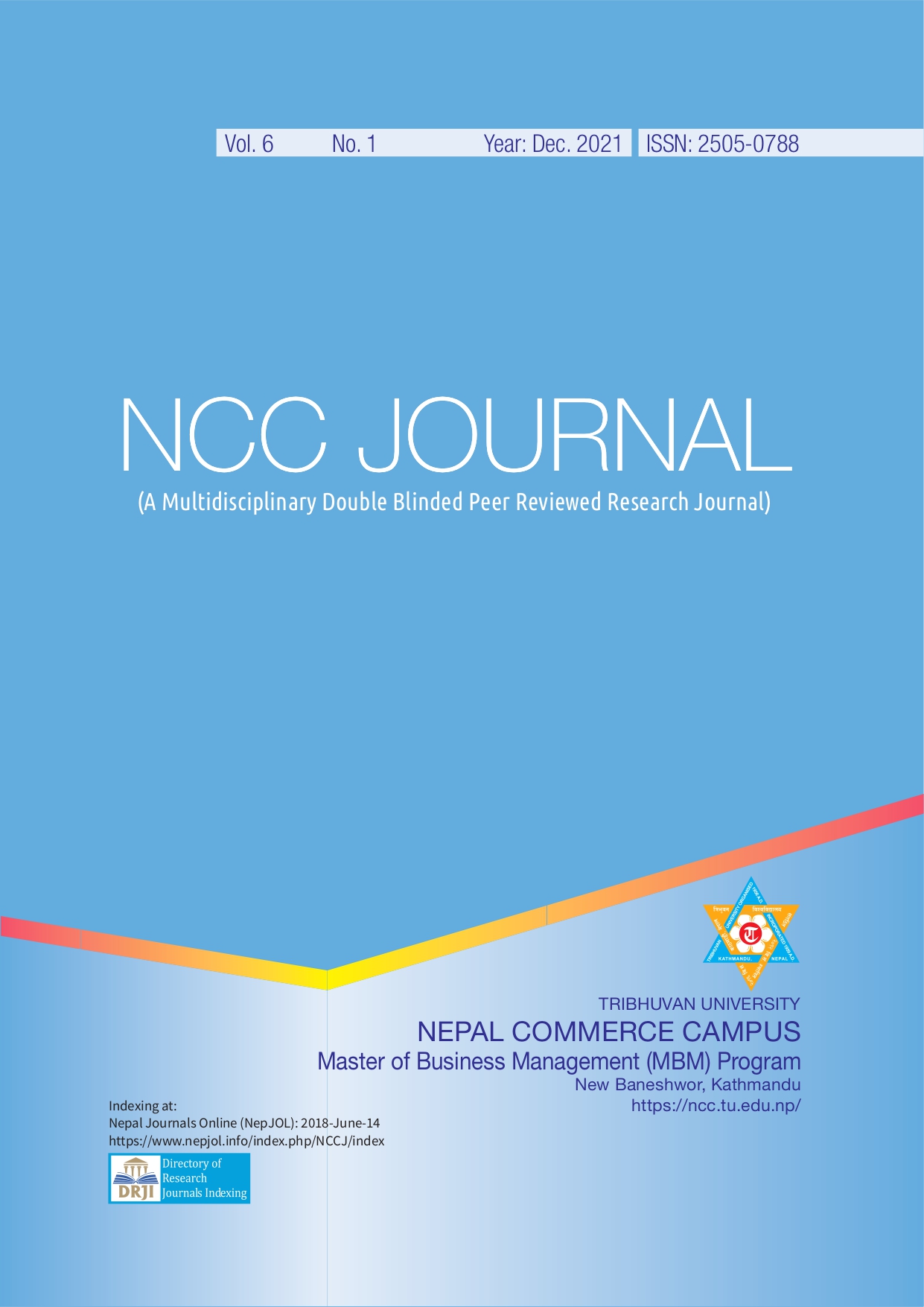The liquidity paradox in Nepalese banks
DOI:
https://doi.org/10.3126/nccj.v6i1.57817Keywords:
Capital adequacy ratio, Liquidity, Bank size, Return of assets, Commercial banksAbstract
This study analyzes the influence of bank-specific and macroeconomic variables on liquidity in commercial banks in Nepal. Using pooled cross - sectional data from ten sample banks for the period 2011/12 to 2016/17, with sixty observations, the study employs a causal-comparative and descriptive research design as its methodology. The study concludes that bank-specific and macroeconomic variables significantly affect the liquidity in Nepalese banks, with different effects observed for public sector banks, joint ventures, and domestic private banks. This study finds that the capital adequacy ratio, bank size, and return on assets are the key determinants of bank liquidity. The findings suggest that the capital adequacy ratio positively impacts the liquidity of all types of banks in Nepal. However, the liquidity of all banks is adversely affected by the return on assets. Additionally, bank size negatively affects the liquid assets to total assets ratios of all types of banks, indicating that larger banks have lower liquidity ratios. The liquid assets to deposits ratio has a positive impact on public banks' liquidity but a negative effect on joint venture and private banks' liquidity in Nepal. These findings have significant implications for policymakers, regulators, and bank managers in Nepal to ensure effective liquidity management.
Downloads
Downloads
Published
How to Cite
Issue
Section
License
© Nepal Commerce Campus, Tribhuvan University
CC BY-NC: This license enables reusers to distribute, remix, adapt, and build upon the material in any medium or format for noncommercial purposes only, and only so long as attribution is given to the creator.




